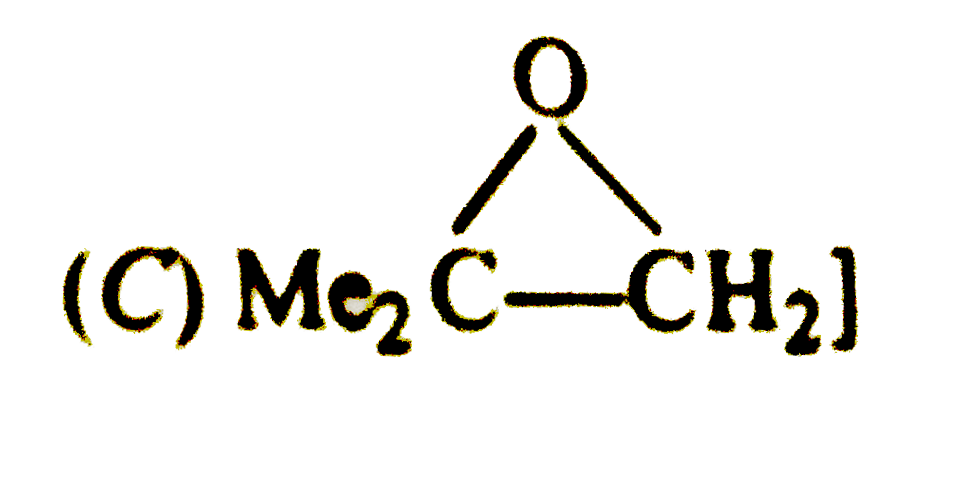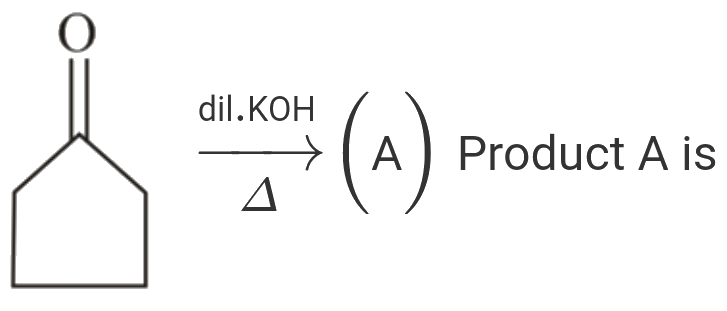Product – I aq KOH←−−−−C2H5Bralc. KOH−−−−→
Product – II, the correct Statement is
product - I is obtained by the elimination reaction
product - I is obtained by the substitution reaction
The molecular formula of Product - I is C2H4, while the molecular formula of Product - II is C2H6O
Product -I is the isomer of dimethyl ether, while product -II is the dehydrated compound of product-I
The correct Answer is:D
To solve the question regarding the reactions of C2H5Br (ethyl bromide) with aqueous KOH and alcoholic KOH, we will analyze each reaction step by step.
Step 1: Reaction with Aqueous KOH
When ethyl bromide (C2H5Br) reacts with aqueous KOH, the primary mechanism involved is nucleophilic substitution (S_N2 mechanism).
1. Nucleophilic Attack: The hydroxide ion (OH⁻) from KOH acts as a nucleophile and attacks the carbon atom bonded to the bromine atom (Br).
2. Formation of Product: The bromine atom is displaced, and the product formed is ethanol (C2H5OH).
Chemical Equation:
C2H5Br+KOH (aq)→C2H5OH+KBr
Step 2: Reaction with Alcoholic KOH
When ethyl bromide reacts with alcoholic KOH, the primary mechanism involved is elimination (E2 mechanism).
1. Elimination Reaction: The alcoholic KOH promotes the removal of a hydrogen atom from the β-carbon (the carbon adjacent to the one bonded to Br) while simultaneously removing the bromine atom.
2. Formation of Product: The product formed is ethylene (C2H4) along with water.
Chemical Equation:
C2H5Br+KOH (alc)→C2H4+HBr+KOH
Summary of Products
- Product I (from aqueous KOH): Ethanol (C2H5OH)
- Product II (from alcoholic KOH): Ethylene (C2H4)
Conclusion
The correct statement regarding the products formed is:
1. Product I is obtained by a substitution reaction (nucleophilic substitution).
2. Product II is obtained by an elimination reaction.
When ethyl bromide (C2H5Br) reacts with aqueous KOH, the primary mechanism involved is nucleophilic substitution (S_N2 mechanism).
2. Formation of Product: The bromine atom is displaced, and the product formed is ethanol (C2H5OH).
C2H5Br+KOH (aq)→C2H5OH+KBr
When ethyl bromide reacts with alcoholic KOH, the primary mechanism involved is elimination (E2 mechanism).
2. Formation of Product: The product formed is ethylene (C2H4) along with water.
C2H5Br+KOH (alc)→C2H4+HBr+KOH
- Product I (from aqueous KOH): Ethanol (C2H5OH)
- Product II (from alcoholic KOH): Ethylene (C2H4)
The correct statement regarding the products formed is:
1. Product I is obtained by a substitution reaction (nucleophilic substitution).
2. Product II is obtained by an elimination reaction.
Topper's Solved these Questions
Similar Questions
Knowledge Check
- Question 1 - Select One

Alc.KOH−−−−−→ Major product is -A B
B C
C D
D
- Question 2 - Select One
A Na ←−−−CH3CH2BrKOH alc. −−−−−−→B.
A and B are respectivelyAC2H4,C2H6BC4H10,C2H4CC4H10,CH3CH2OHDC2H4,CH3CH2OH - Question 3 - Select One
CH3CH2COOHRed P/HI−−−−−→ is alc. KOH−−−−→Product. Product
ACH2=CHCOOHBCH2CH2OHCCH3CH2CNDCH2CHClCOOH
Supply structural formulae for missing compounds.
(i) H2C=CH2+(A)→ClCH2−CH2OHH2SO4−−−−−−→413K(B)alc. KOH−−−−−−−→Δ(C)
(ii) CH3CHBrCH3alc. KOH−−−−→(A)HBr−−−−−→Peroxide(B)CH3ONa−−−−−→(C)
(iii) Me3CBralc. KOH−−−−→(A)HOCl−−−→(B)NaOH−−−→(C)
 View Solution
View Solution
Alo KOH−−−−→ Possible product are :View Solution , (i)Br2/KOH−−−−−−−−→(ii)H+/Δ Product isView Solution
, (i)Br2/KOH−−−−−−−−→(ii)H+/Δ Product isView SolutionCH3CH2CH2Clalc.KOH−−−−−→BHBr−−→CNa//ether−−−−−→D
In the above reaction, the product D isView SolutionIn the reaction
CH3COOHLiAlH4−−−→APCl5−−→BAlc.KOH−−−−−→C
The product C isView Solution


